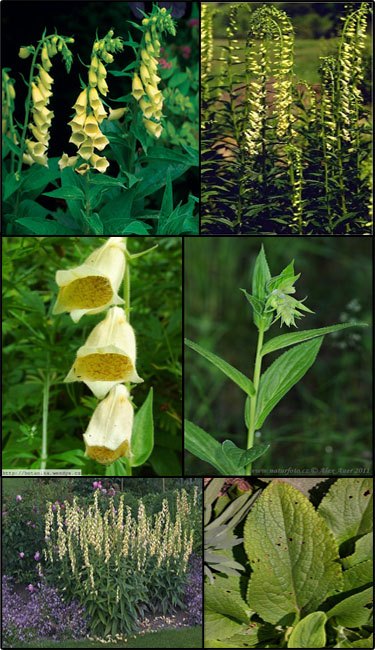Yellow foxglove (Digitalis grandiflora)
 Description: All parts of the plant are highly toxic.
Description: All parts of the plant are highly toxic.Habit: Herbaceous, grows to a height of 2-3 ft with a spread of 1-1.5 ft, clump forming.
Leaves: Finely-toothed, medium green in color; ovate-lanceolate leaves (10 in long and 2 in wide), ones that appear on the basal rosettes are largest, becoming smaller as they rise up the stems.
Stems: Ridged; upright.
Flowers: Large, tubular, funnel-shaped, pendulous, soft, yellow flowers that are up to 2 in long, interior brown markings, bloom in terminal racemes that are up to 12 in long; blooms May through June.
Fruit and seeds: Fruits are septicidal capsules.
Habitat: Native to southern Europe. Grows well in organically rich, consistently moist soils.
Reproduction: By self-seeding.
Similar species: Straw foxglove (Digitalis lutea) and species of Beardtongue (Penstemon spp.).
Monitoring and rapid response: Hand-pulling can be effective; herbicides more effective with large infestations. Credits: The information provided in this factsheet was gathered from the Hortipedia plant database, Missouri Botanical Garden and the USDA PLANTS Database.
Individual species images that appear with a number in a black box are courtesy of the Bugwood.org network (http://www.invasive.org).Individual photo author credits may not be included due to the small display size of the images and subsequent difficulty of reading the provided text. All other images appear courtesy of Google (http://images.google.com).
Common Name: | Yellow foxglove |
Scientific Name: | Digitalis grandiflora |
Family: | Scrophulariaceae (Figwort) |
Duration: | Biennial, Perennial |
Habit: | Herbs |
USDA Symbol: | DIGR4 |
